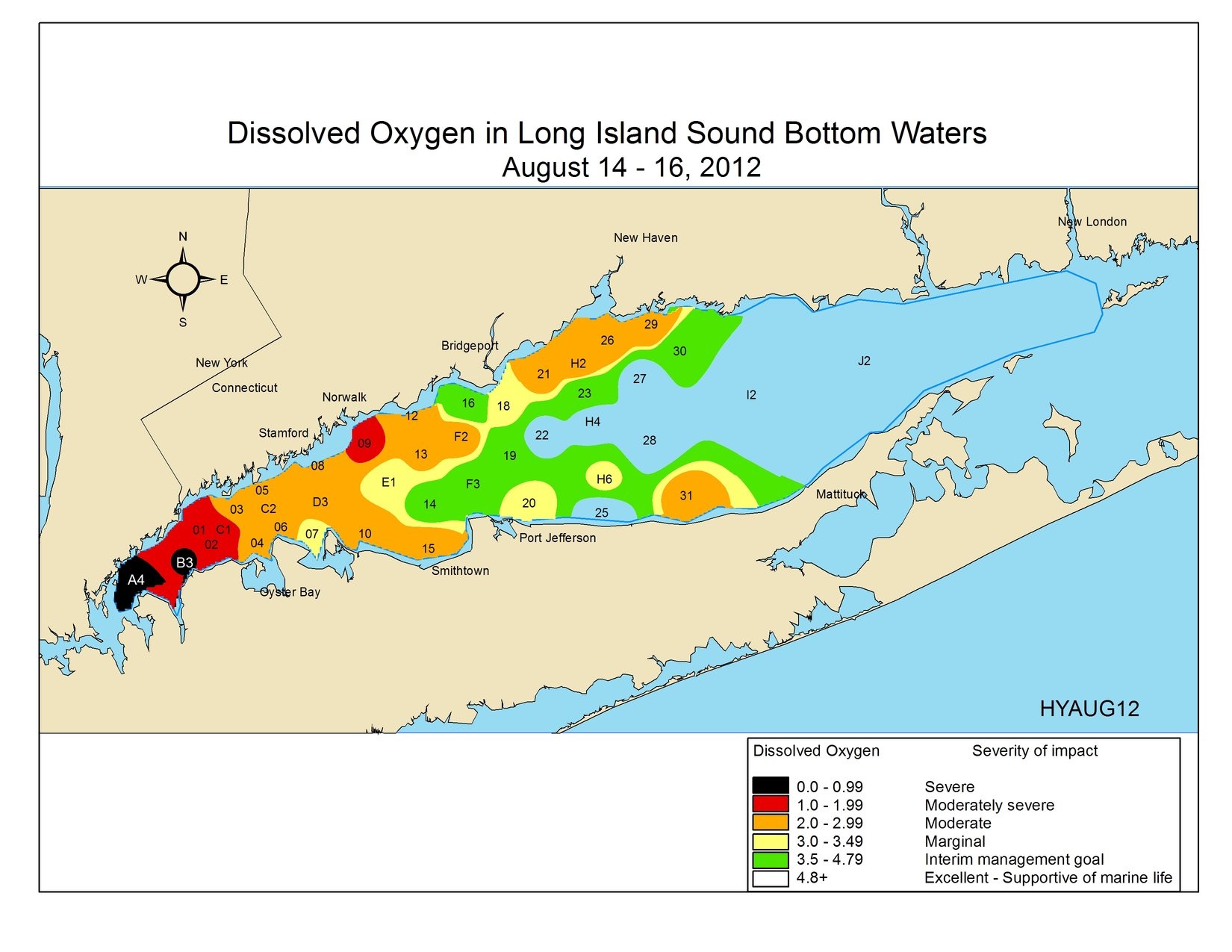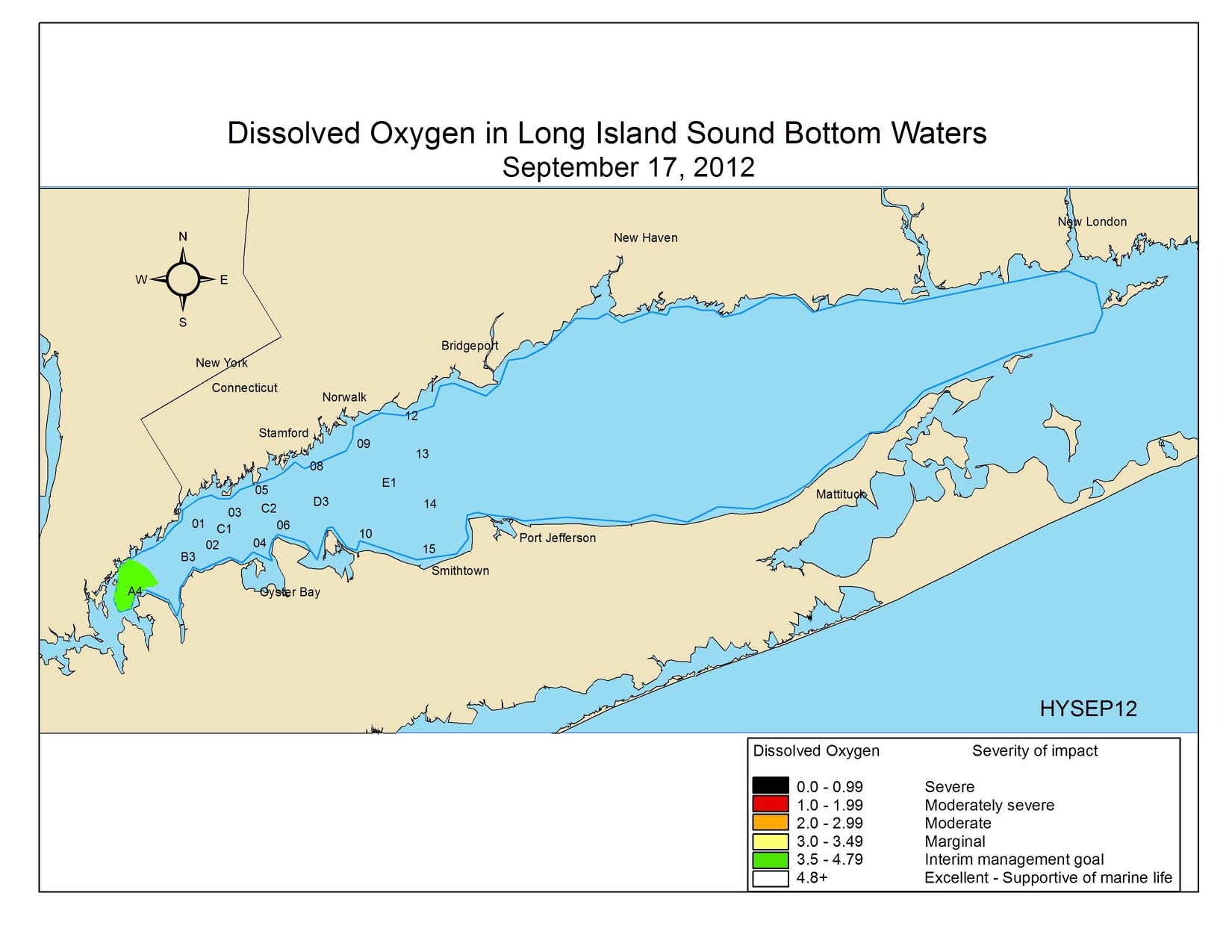It’s no surprise, but water quality in western Long Island Sound rebounded nicely in September, a month after conditions were their worst in years.

The changing weather patterns and cooler temperatures of late summer and early fall always loosen the grip of hypoxia.
This month, water quality testing conducted by the Connecticut Department of Energy and Environmental Protection showed that dissolved oxygen concentrations in 18 square miles of the Sound, between New Rochelle and Larchmont in Westchester and Sands Point and Glen Cove in Nassau, were between 3.5 and 4.79 milligrams per liter.
That’s a vast improvement over mid-August, when readings showed less than 1 milligram per liter.
In the rest of the Sound this month, dissolved oxygen was no worse than 4.79 milligrams per liter and generally much better.
In mid-August, almost one-quarter of the Sound – 288 square miles – had dissolved oxygen concentrations below 3.
All the details are here, in a post from late August. But the important things to know are:
- When dissolved oxygen falls below 1, the habitat is so compromised that fish can’t survive. Measurements below 1 were common in the 1990s and into the first decade of this century, but this year was the first time dissolved oxygen had fallen that low since 2008.
- When dissolved oxygen falls below 3, some fish are forced to find healthier waters while those that stay and tolerate the change become more vulnerable to disease. In August, 288 square miles of the Sound – an area roughly from City Island to Norwalk – had dissolved oxygen concentrations below 3, the fourth largest extent of hypoxia in the Sound since regular water quality measurements began in 1991.
These maps show the extent of hypoxia in August (the black, red and orange areas indicate the worst conditions) and how things have changed in September.


Hypoxia is easily the biggest threat to the ecological health of Long Island Sound. It is caused by nitrogen, mainly in treated sewage; the nitrogen acts as a fertilizer in the Sound, triggering an explosion in the growth of algae, which when they die and decompose remove oxygen from the water.
Hypoxia is also a warm weather phenomenon. Warmer water naturally holds less oxygen than cooler water. As water temperatures rise, dissolved oxygen falls. This year, when a warm winter led to a hot summer, it apparently set up conditions that were ideal for hypoxia.
Sewage plant operators along the Sound are under orders to improve their facilities so that most of the nitrogen in their wastewater – 58.5 percent – is removed. Connecticut’s deadline is 2014; treatment plants in New York have until 2017 to reach the goal. Save the Sound is keeping an eye out to make sure that sewage plants meet these goals.
For now, though, we are glad conditions have improved. Although it wasn’t a surprise, it was still good news. But with global temperatures rising and with all the evidence indicating that Long Island Sound is in a long-term warming trend, it also shows just how small our margin for error is.
Posted by Tom Andersen, NY program and communications coordinator for Save the Sound. Tom is also the author of This Fine Piece of Water: An Environmental History of Long Island Sound.

1 thought on “Hypoxic Conditions in the Sound Improve in September”
Comments are closed.